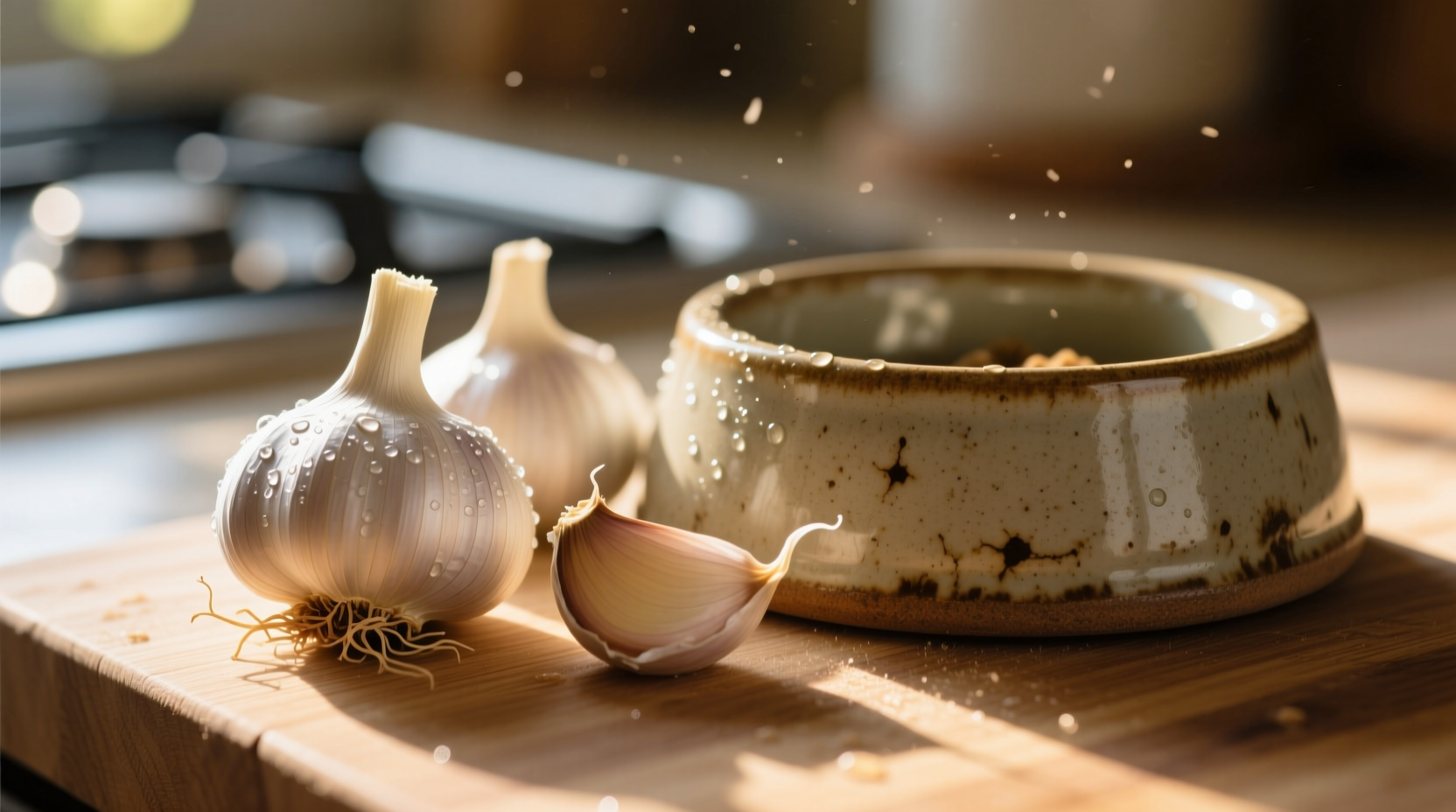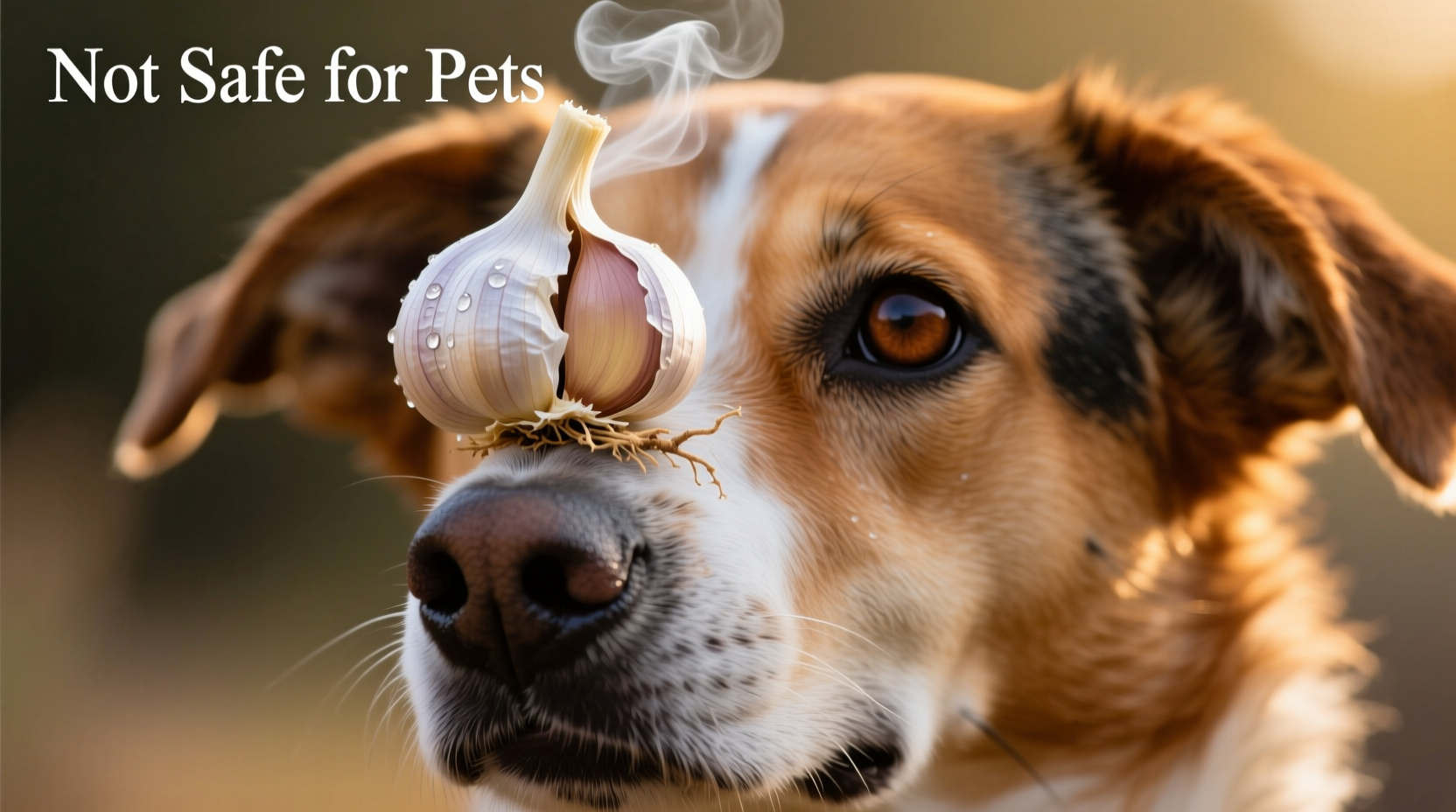Your kitchen might contain a silent threat to your canine companion that many pet owners overlook. As a pet owner, understanding the real risks of garlic exposure could prevent a medical emergency for your dog. This guide delivers evidence-based information from veterinary toxicology experts about why garlic poses serious health risks to dogs, how to recognize poisoning symptoms, and what immediate actions can save your pet's life.
The Science Behind Garlic Toxicity in Dogs
Unlike humans, dogs lack the metabolic pathway to safely process N-propyl disulfide, the organosulfur compound in garlic. This chemical oxidizes hemoglobin in red blood cells, causing Heinz body formation that leads to hemolytic anemia. According to the ASPCA Animal Poison Control Center, garlic belongs to the Allium family (which includes onions, chives, and leeks) and is five times more potent than onions in its toxic effects on dogs.
Research published in Veterinary and Human Toxicology demonstrates that repeated exposure to small garlic amounts accumulates toxicity over time. Japanese breeds like Shiba Inus show heightened sensitivity due to genetic factors affecting red blood cell metabolism. The dangerous misconception that "small amounts are medicinal" for dogs has been thoroughly debunked by veterinary researchers at institutions like Cornell University's College of Veterinary Medicine.

Recognizing Garlic Poisoning Symptoms
Symptoms typically appear 24-72 hours after ingestion as red blood cell damage accumulates. Early recognition significantly improves treatment outcomes. The following table shows progression stages:
| Timeframe | Early Symptoms | Advanced Symptoms |
|---|---|---|
| 24-48 hours | Mild lethargy, decreased appetite | Severe weakness, pale gums |
| 48-72 hours | Vomiting, abdominal pain | Rapid breathing, elevated heart rate |
| 72+ hours | Dark urine (hemoglobinuria) | Collapse, jaundice, organ failure |
How Much Garlic Is Dangerous?
Veterinary toxicologists at the Cornell University Hospital for Animals confirm there is no safe dosage threshold for garlic in dogs. Toxicity depends on multiple factors:
- Dog size: Just one clove (5g) can poison a 15-pound dog
- Garlic form: Powdered garlic is 5x more concentrated than fresh
- Exposure frequency: Repeated small doses cause cumulative damage
- Breed sensitivity: Japanese breeds show toxicity at lower doses
Commercial "natural" flea prevention products containing garlic put dogs at significant risk. The American Veterinary Medical Association strongly advises against using any garlic-based supplements for dogs.
Immediate Actions for Garlic Exposure
If your dog ingests garlic, follow these vet-recommended steps:
- Document the exposure: Note garlic type, amount, and time consumed
- Contact animal poison control: ASPCA Poison Control (888-426-4435) or Pet Poison Helpline (855-764-7661)
- Do NOT induce vomiting without professional guidance
- Seek immediate veterinary care even if symptoms aren't present
Treatment typically involves intravenous fluids, oxygen therapy, and in severe cases, blood transfusions. Early intervention within 4-6 hours significantly improves prognosis according to the Journal of Veterinary Emergency and Critical Care.
Common Hidden Sources of Garlic
Dog owners often unknowingly expose pets to garlic through:
- Human foods: Leftover pizza, pasta sauces, salad dressings
- "Healthy" dog treats marketed as natural remedies
- Garlic powder in commercial pet foods (check ingredient lists)
- Garlic plants in home gardens
- Leftover cooking scraps containing garlic
Remember that garlic powder and garlic salt pose equal or greater risks than fresh garlic due to higher concentration. Always check ingredient labels on commercial dog foods and treats for hidden garlic derivatives like Allium sativum extract.
Safe Alternatives for Canine Health
Instead of risky garlic supplements, consider these veterinarian-approved options:
- For immune support: Veterinarian-prescribed probiotics
- For flea prevention: FDA-approved topical treatments
- For digestive health: Pumpkin puree (not pie filling)
- For overall wellness: Balanced commercial diets meeting AAFCO standards
Always consult your veterinarian before introducing new supplements. Board-certified veterinary nutritionists can create customized diet plans addressing specific health concerns without dangerous ingredients.
Frequently Asked Questions
Can dogs eat food with a small amount of garlic?
No amount of garlic is considered safe for dogs. Even trace amounts in human foods can accumulate toxicity over time. The American Veterinary Medical Association states there is no established safe threshold for garlic consumption in dogs.
How soon after eating garlic will my dog show symptoms?
Symptoms typically appear 24-72 hours after ingestion as red blood cell damage accumulates. Early signs include lethargy and decreased appetite, while severe symptoms like pale gums and dark urine indicate advanced hemolytic anemia requiring immediate veterinary care.
Is cooked garlic safer for dogs than raw garlic?
No, cooking does not reduce garlic's toxicity. The harmful organosulfur compounds remain stable through cooking processes. Both raw and cooked garlic, including garlic powder and garlic salt, pose equal risks to dogs.
What should I do if my dog ate garlic bread?
Contact your veterinarian or animal poison control immediately. Provide details about the amount consumed and time of ingestion. Do not wait for symptoms to appear, as early intervention significantly improves treatment outcomes for garlic toxicity.











 浙公网安备
33010002000092号
浙公网安备
33010002000092号 浙B2-20120091-4
浙B2-20120091-4